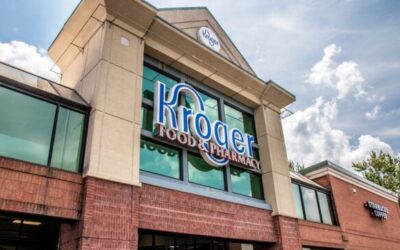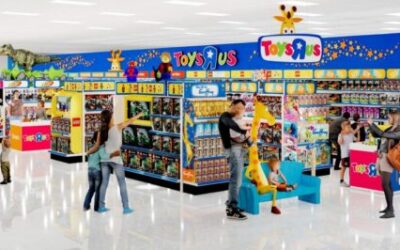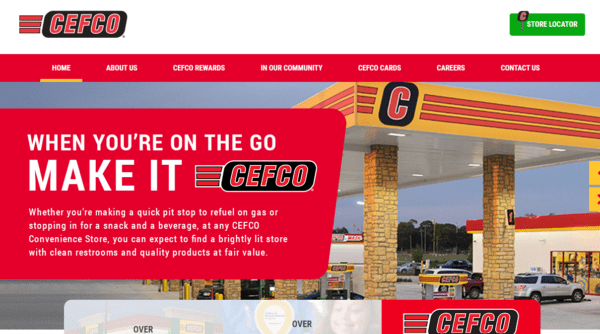Why NPS Falls Short in Ecommerce, and the Case for Earned Growth Ratio as a Better Metric


Customer satisfaction and loyalty are paramount in today’s competitive ecommerce landscape, since customers have countless brands, retailers and marketplaces to choose from. Even the best products and online storefronts fall flat if customers aren’t happy with one tiny part of their experience. One negative interaction can easily drive them away.
At the same time, it is common knowledge that keeping an existing customer is cheaper than getting a new one, which makes it a worthwhile investment to understand and implement strategies (and proper incentives for internal teams!) that keep them coming back for more.
And while understanding customer satisfaction is crucial, traditional methods like Net Promoter Score (NPS) have limitations that can actually lead to the opposite of intended outcomes if not applied carefully.
For a more reliable and actionable picture, businesses need metrics like Earned Growth Ratio (EGR). This goes beyond recommendations and captures actual customer behavior, such as repeat purchases and referrals, providing a more nuanced understanding of customer satisfaction.
The Shortcomings of NPS
Survey collection methods can significantly impact the validity of NPS data. Offering incentives like “If you fill out this survey, give us a 9 or 10 and mention my name, it’ll be doing me a huge favor” can emotionally influence customers, potentially leading to inflated scores that don’t reflect genuine experiences.
A high score might simply be a result of manipulation, offering little meaningful insight into actual customer satisfaction or actionable guidance for improvement. Essentially, a high NPS might look good on paper — but lack true substance. This is especially prevalent if your employees are incentivized or paid a bonus on the basis of their NPS scores.
Another limitation of NPS is found in its data collection methodology. Ideally, data should be gathered through statistically sound sampling methods that control for various factors and make sure a representative sample of the customer base. But NPS often falls short in this regard.
Not only that, NPS primarily relies on self-reported data from customer surveys, potentially missing the bigger picture. It doesn’t consider quantitative metrics like sales figures or revenue, focusing only on customer responses. While this approach captures vocal feedback from both highly satisfied and dissatisfied customers, it doesn’t take into consideration the vast majority of customers who fall somewhere in the middle (and are often most of your profit!).
Brands need a more reliable indicator of customer satisfaction that will guide them toward meaningful improvements in product, service and overall experience.
Why Earned Growth Ratio is a Better Metric
In a nutshell, unlike NPS, which relies on customer opinions, EGR focuses on objective data like revenue, providing a clearer picture of how customer satisfaction translates to a brand’s financial success.
Net Revenue Retention (NRR), a component of EGR, reflects year-over-year revenue from existing customers, providing valuable insights on recurring purchasers. Higher NRR indicates satisfied customers who are likely to spend more over time, opening doors for strategic initiatives like promotions, upselling and plan upgrades.
Going into more specifics, EGR breaks down into two key metrics: (1) Year-over-Year Retained Revenue, a metric that reflects the percentage of revenue retained from existing customers compared to the previous year. Most companies can calculate this relatively quickly. (2) Net New Referral Revenue, which captures the revenue generated from new customers acquired through referrals.
Although the second metric is a little more complex to gather, a simple solution could be adding a question at checkout, such as “How did you hear about us?”. This information, combined with Retained Revenue, forms the foundation of EGR.
Also, while NPS captures feedback only from engaged customers who choose to respond to surveys, EGR takes everyone into account, offering a more comprehensive and unbiased view of customer satisfaction.
Earned Growth Ratio and Retail and Ecommerce
EGR holds particular significance for the retail industry because it’s relatively easy to measure in this sector. However, the process varies depending on the sales model.
When it comes to direct-to-consumer, or own stores, companies can readily track EGR components like Retained Revenue and Referral Revenue with their physical stores and customer lists. This allows for a clear understanding of customer satisfaction and growth potential.
Measuring EGR in ecommerce is even simpler. With a referral program and a customer relationship management (CRM) system, calculating growth from new referrals becomes straightforward.
Tracking EGR becomes a little more challenging for businesses that are reliant on wholesale channels. In such cases, statistical sampling methods like surveys can be employed. But it’s important to make sure that these surveys are rigorously designed to avoid biases common in traditional methods like NPS.
Challenges and Transitioning
Transitioning to EGR might face initial challenges, primarily related to measurement and establishing trust in the new metric.
Some may be used to using NPS and hesitant to transition, but it’s important to remember that NPS can still serve as a valuable diagnostic tool. Used sparingly, it can offer insights into customer satisfaction and identify areas for improvement. In other words, transitioning from NPS to EGR doesn’t mean complete abandonment of the former.
You can run EGR alongside NPS or Customer Lifetime Value for a period of six to 12 months. This parallel tracking can provide a comparative analysis, allowing you to understand how EGR interacts with these other metrics. Over time, this approach can help build confidence and trust in the validity and usefulness of EGR for your business.
Additionally, a well-defined roadmap is essential for successfully implementing EGR. This roadmap should encompass key elements like identifying data sources, implementing data collection methods and guaranteeing data quality and validation procedures. It will provide you with a clear view of the initiatives you need to have in place in order to get that full view.
With EGR, the goal is to adopt a data-driven approach to understanding and optimizing customer satisfaction. This comprehensive view can empower businesses to make informed decisions, set impactful objectives and strategically allocate resources.
Most importantly, instead of looking at what your customers say about you, you’ll be measuring and improving a metric that is directly tied to the behavior that affects your bottom line — buying and getting others to buy your products.
Konrad Kopczynski is the VP of Strategic Analytics at Croud, where he helps businesses make informed decisions through data-driven solutions. With over a decade of experience in data analytics, Kopczynski has a strong understanding of how to use tools and techniques to drive tangible results, not just analysis. Prior to joining Croud, Kopczynski was the Managing Partner of impakt Advisors, a data analytics agency that he founded and grew with a focus on helping consumer brands optimize marketing spend, consumer targeting and inventory planning. Croud acquired impakt Advisors in 2021. In his current role, Kopczynski works closely with world-leading brands including Coach, NewYork-Presbyterian and London Business School to create real business impact for their organizations.











